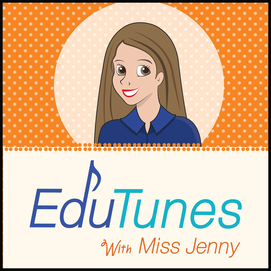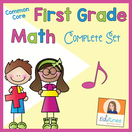|
I hope you enjoy "Making 11-20." Children learn three ways to demonstrate the base 10 system. When you sing, use different teaching strategies. At first, just watch and learn. Later, invite students to hold up their hands with partners to make the numbers. Students can also write down numbers on white boards. Other times, they can move base 10 blocks as the song plays. This song is one of over 30 videos from the kindergarten and first grade math video sets. (Note that you can now try all my music videos FREE for 30 days, at HeidiSongs! Heidi and I have teamed up to give you nearly 1,000 videos that teach all subjects through music. You'll see my music sets throughout the site, with my entire catalog at the bottom.)
Here are some more ideas for making a variety of music videos work for you: 1. "Coview" videos with children. According to the “Early Learning and Educational Technology Policy Brief” developed by the U.S. Department of Health and Human Services (2016), coviewing means not only watching videos with children—but also creating learning opportunities before, during, and after viewing them. 2. Discuss viewing behaviors. Decide on behaviors that make sense for your class, depending on the song. I've described ideas for "Making 11-20" above. You could ask students to vote on which option to choose each time you sing. Note that small changes in expectations can result in big behavioral changes. For instance, if students are playing with manipulatives instead of showing song concepts, consider asking them to watch and read with their hands in their laps next time. Practice with manipulatives before singing another time, so that children know exactly what to do before trying again. 3. Choose a focus. I often include everything there is to know about a topic in a video. For instance, I've incorporated three ways to show numbers here. The idea is that children should learn something new each time they sing. Choose a focus, or simply ask children to find something new that they notice before the video plays. After the video, you will have the opportunity to do a mini-formative assessment as children share discoveries, misconceptions, and questions. 4. Connect to real-world situations. Whether children are reading, solving math problems, or engaging in STEM activities, connect to related content from videos. Connecting to song content can help students to perform real-world activities. In addition, they are more likely to recall the activity whenever they later review the video. 5. Ask children to point to the words. Pointing to words has been a huge incentive for my students. They can point to words in videos or lyric pages that you project. You can purchase a fun pointer, or just use a meter stick. I’ve found that when I say, “If you’re really focusing on learning something new, you may have a chance to point to words on the next song,” children become much more focused. You may be surprised that some of your lowest pre-readers will successfully point to words. It turns out that musical intelligence is the first of Howard Gardner's multiple intelligences to develop in young minds. Children internalize the rhythm of music as they find the words. 6. Use lyric sheets. Think of videos as a mix between modeled reading and shared reading. When children point to lyric sheets as they video plays, they are now moving between shared reading and independent reading. You may want to use lyric sheets in whole-group, small-group, partner, or independent reading time, with or without the music. 7. Create student-centered rubrics. Songs are a great starting point for student-centered rubrics. After singing, ask children what they should know about a topic. For instance, in the song “Making 11-20,” students may say:
Perhaps you had a rubric in mind before introducing the song. As a teacher, I let my children know that I value their ideas--and I contribute as the editor. Sometimes, the class comes up with my ideas or I end up modifying ideas a little bit to fit my our needs. To be honest, I'm often happily surprised when their new, fresh, child-centered ideas help to mold my original thoughts into something better! Reference
King, J., Doggett, L., South, J., Burwell, S., Smith, L., and Rudisill, S. (2016). “Early Learning and Educational Technology Policy Brief.” Office of Educational Technology. Retrieved from https://tech.ed.gov/earlylearning/.
2 Comments
|
Welcome!Thanks for reading my blog. I'm excited to help you to incorporate evidence-based practices in your classroom or home. Archives
April 2021
Categories |
EduTunes Website: Copyright 2018 Jennifer Fixman Kramer. All Rights Reserved.




 RSS Feed
RSS Feed
